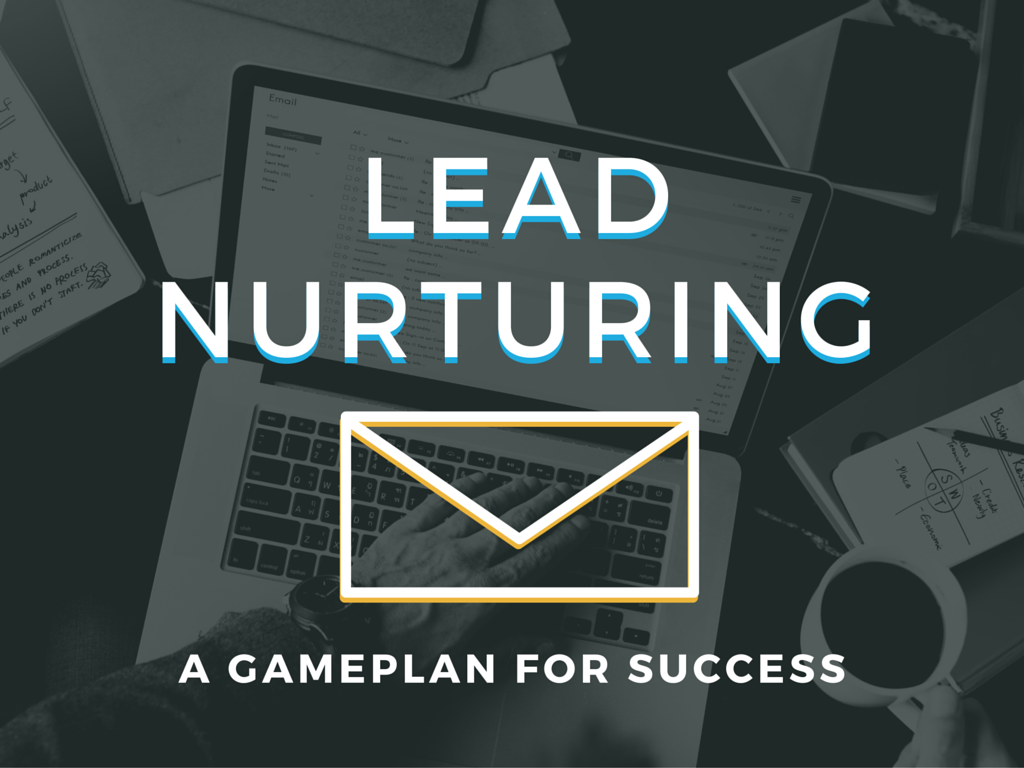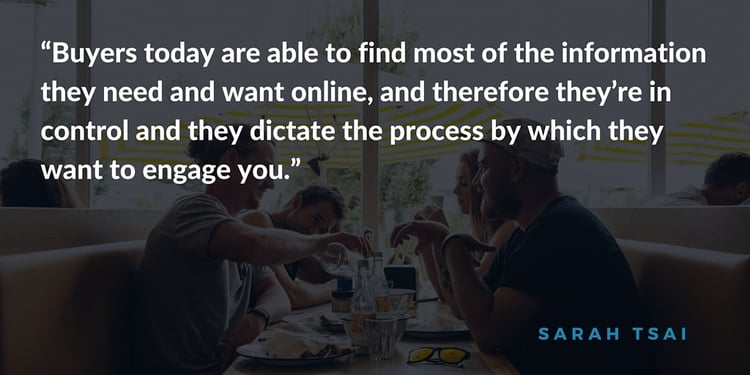- Jun 15, 2016
- By Lauren Lutz
- In Marketing Strategy and Planning
A Lead Nurturing Game Plan (+ Worksheet) for Marketing and Sales Teams

Working at an inbound marketing agency, we get asked about lead nurturing a lot by our clients — sales and marketing staff alike. When should I start following up with leads? What do I need to say to them? Can I automate some sort of email workflow to keep checking in with them?
We can answer these questions for you, but the thing is, there’s not golden ticket for anyone. For your marketing and sales teams to create an effective lead nurturing campaign, you have to get to the root of the communication: the person on the other end. Like we said last week, the modern marketing and sales funnel is buyer-centric. So, creating a lead follow-up sequence that works is dependent upon who you’re trying to make contact with, where they are in the buyer’s journey and what action you want them to take next.
It’s time to think outside the box and get to the nitty gritty of what lead nurturing today is all about, and how you can break the mold and craft communications that get your leads’ attention.
We’ve got lots of information in the rest of this post for you to read for insights, but we also have a template we use internally to create lead nurturing workflows (as inspired by HubSpot and past experiences).
Download our Marketing Effectiveness Checklist to help improve and enhance your overall marketing efforts.
Refresher: Lead Nurturing 101
What is lead nurturing? Over at Marketo they say:
“Lead nurturing is the process of developing relationships with buyers at every stage of the sales funnel, and through every step of the buyer’s journey. It focuses marketing and communication efforts on listening to the needs of prospects, and providing the information and answers they need.”
Typically, marketers want to nurture leads once they give their contact information on a landing page or form. Usually it looks like a series of emails that offer up additional resources or ask them to request a demo. If a lead is sales qualified, sales reps take over and try to nurture the contact with a series of phone calls or automated emails that periodically check in, offer up information about the company and ask if the prospect would like more information on products or services.
The thing is, for both marketing and sales teams, it’s not easy to get results from these efforts. Gina, our VP of Marketing, has said that five years ago, a series of automated nurturing emails got results. But now, as customers are evolving and growing weary of email communication, the marketing and sales funnel is being forced to evolve, too. And it’s not a bad thing — when customers change, smart marketing and sales teams change with them.
The best lead nurturing advice we can give to help marketers and sales reps change with the times and better connect with today’s customers: center your lead nurturing around the buyer. Provide further education on their subject of interest. Develop workflows around where various leads are at during the buyer’s journey. No lead moves down your marketing and sales funnel in a vacuum. As Sarah Tsai, one of our inbound marketing managers, said recently:

Since buyer’s dictate the process by which they want to engage you, be a helping hand along the way. That being said, let’s get into the details of how to craft a lead nurturing workflow that’s all about the buyer, not all about you.
The 6 Most Important Questions to Ask to Create an Effective Lead Nurturing Workflow
1. Who do you want to nurture? Why?
If you create a lead nurture campaign without a specific type of contact in mind, it won’t be effective. You must know who exactly the nurturing campaign is for so it can work. For instance, an email nurture campaign created for people who download one of your whitepapers will most likely be more effective than creating an email nurture campaign that enrolls every single contact that converts on your website. You can segment leads based on how they convert, and then devise nurturing campaigns that will best engage them. Get specific to get better results.
2. What action are you nurturing them towards?
Once a web visitor enters their contact information into a form, they’re a lead (and by your standards, could be marketing qualified or sales qualified). What do you want them to do next? For instance, if a lead downloads their second whitepaper, that means they must find your content pretty engaging. What do you want them to do next? Your gut reaction might be for them to schedule a demo or consultation. However, the marketing and sales funnel doesn’t work in a vacuum. You can’t expect leads to always take the next logical step in your sequence. So, think about a helpful next step for them. Perhaps it’s registering for a webinar or visiting your case studies page. Choose a black and white goal, and create your whole nurturing campaign with that goal in mind.
3. What set of communications do you need to develop to create an effective nurturing workflow?
We’ve been focusing mainly on nurturing through email, but you have a plethora of channels to choose from depending on how warm the lead is. If it’s a lead that has given you their email address, chances are you can best engage them with a helpful sequence of emails that guide them through the buyer’s journey (based on where they were at when they were enrolled into your nurturing campaign). Define how many communications you’ll need to send at what time to reach the end goal of your nurturing campaign.
4. What's the goal of each communication?
You’ve decided what your overall goal is, and how many emails, social media messages, phone calls, etc., it will take to help get leads to that point. So, if you have five emails all geared towards getting a lead to register for an upcoming webinar, what will be the goal of each individual email? Maybe in the first one you suggest a few blog posts they might like based on a whitepaper they’ve downloaded. Perhaps the third email offers up a case study and mentions you have a webinar. Whatever the case, make sure every communication in your sequence has a goal of its own that builds towards the overall goal of the nurturing campaign.
5. How much time will be between each communication?
You need to make sure you find a balance between being persistent and helpful, and being a nuisance. If you bother leads to the point of being annoying, they might spam you or unsubscribe. If you let too much time go by in between communications, leads might go cold. Find the perfect balance that works for your contacts. It might take some trial and error, but constantly tweaking will reveal what works best for your target audience. The length of your buying cycle will play into how long you should nurture leads (i.e. If you have a one-year buying cycle, you probably shouldn’t email leads every week, maybe just once a month).
6. How will you organize/track this workflow internally?
We use HubSpot to house all of our marketing and sales information, and we like to keep it organized. We name nurture campaigns by their quarter, and by their purpose (i.e. Q3 Webinar Registration Workflow). Do what works for your company, but be consistent.
Ready to get started?
If you’re interested in nurturing leads, we’ve given you a game plan. Many of our examples are nurturing tactics from a marketing perspective. However, sales can use this game plan, as well. If you’re a salesperson who has just received a lead from marketing, you can create a workflow based on the last action they took to become sales qualified. The bottom line: this worksheet helps you stay organized, and it helps you devise a nurturing campaign that is focused around one goal. We’ve found that the more specific we are in the goal of a nurture campaign, the better results we get.
So, we’ve shared our wisdom — go forth, and try it out yourself!





